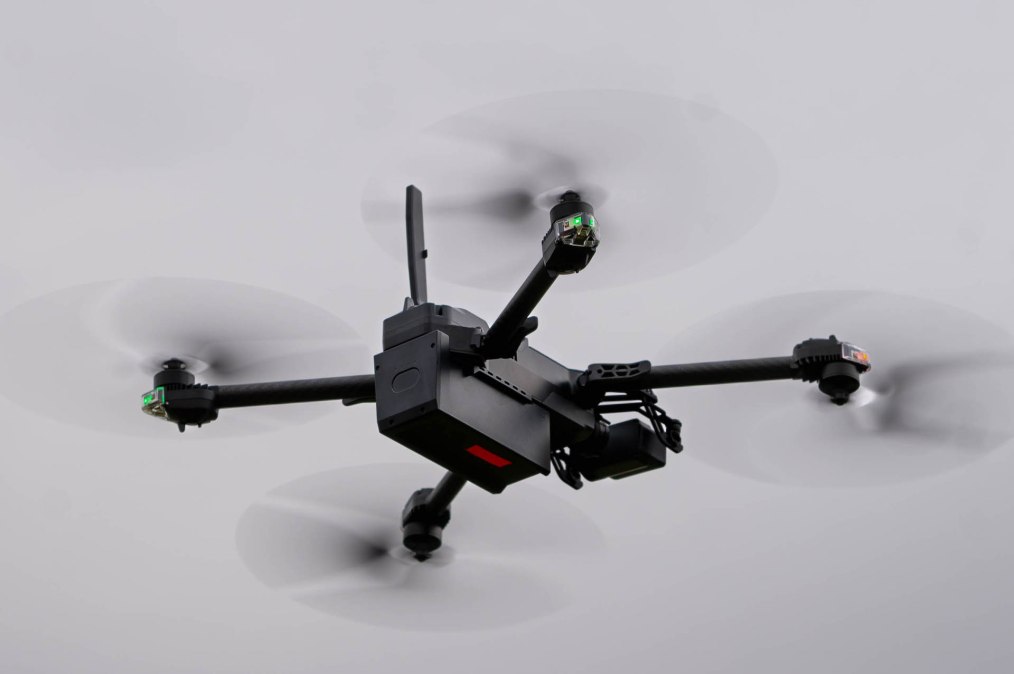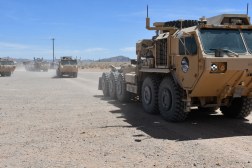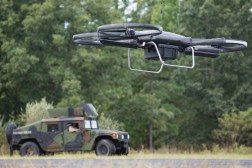Pentagon soliciting industry for adapter and software to convert remotely piloted drones into autonomous systems

The Defense Advanced Research Projects Agency is about to fund a program to develop a “drone autonomy adapter” and other technologies that would allow the U.S. military and its international partners to convert their current fleets of teleoperated unmanned aerial systems and commercial UAS into more advanced platforms.
The new solicitation for the Rapid Experimental Missionized Autonomy (REMA) project comes as the Pentagon is trying to leverage breakthroughs in software, artificial intelligence and other capabilities that could enable drones to operate with less human interaction on dynamic battlefields, including in swarms.
The recent announcement of the Replicator initiative is just one example of this push.
While many future uncrewed aerial systems are expected to have autonomy capabilities baked in from the beginning, the Department of Defense is also looking to upgrade platforms that are already in the fleet.
“The REMA program’s primary objectives are to enhance remotely operated group 1-3 stock commercial and military drones at the speed of relevance,” according to DARPA’s Tactical Technologies Office. Unmanned aerial systems in groups 1-3 are on the lower end of the spectrum in terms of size and endurance.
“Commercial-quality drones demonstrate surprising usefulness on the modern battlefield. Rapid Experimental Missionized Autonomy (REMA) will enhance commercially available and stock military drones with a subsystem to enable autonomous operation. The program will focus on delivering autonomy without being tied to a specific drone design,” per the solicitation.
The program will involve building an adapter that can detect the type of UAS it is interfacing with; mission-specific autonomy software to upgrade the drone from remotely piloted operation to autonomous mission execution using the adapter interface; rapid software development spirals; and a government-maintained cloud environment where software can be uploaded and reposited for testing, evaluation and distribution to users.
The adapter must support a wide variety of drones and allow for installation on a large scale, according to DARPA. Notably, the technology is intended to be implemented on stock commercial and military drones from multiple countries.
Proposers will be expected to develop an installation approach for the adapter technology and mission-specific autonomy software subsystem for up to 10,000 drones per month “without excessive effort,” the solicitation states.
Planned “spiral challenges” for the technology are focused on electronic warfare challenges.
DOD-furnished platforms equipped with the technology will be tasked with continuing with reconnaissance missions on a preset route after being jammed and then reestablishing teleoperation and autonomous navigation to a waypoint or cursor-selected location in a video feed after being jammed, according to the solicitation.
Other potential spiral challenges related to autonomous capabilities include automapping of ground features; point-to-point flying through urban terrain; reconnaissance and broadcast of objects of interest; recon and returning home with stored imagery and video; and recon and “adversary distraction through repeated close approaches.”
DARPA plans to award other transaction agreements — using a 30-days-to-award OT model — with an 18-month period of performance and a total value of up to $25 million.
Abstracts from proposers are due Oct. 3.






